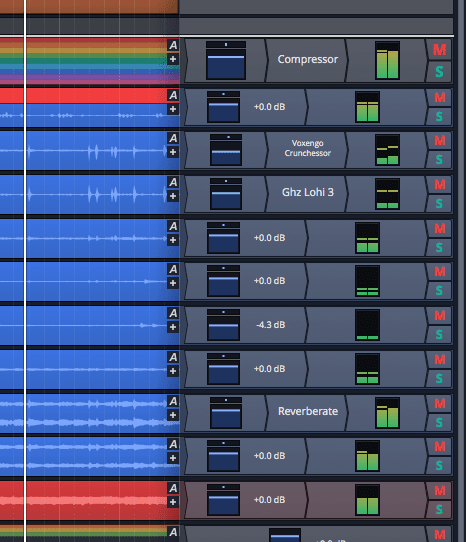
It’s finally time for the Tracktion Waveform 9 review!
I’m going with a different format this time. Each post will cover at least one of the following categories: good, bad and weird. Each category may have more than one entry. If all goes well then the ‘good’ section will have multiple entries each time, and maybe there’ll be a post with no Bad section?
I love Korean cinema (and kdramas). One of my favorite films is 좋은 놈, 나쁜 놈, 이상한 놈, aka “The Good, the Bad, the Weird”. I highly suggest watching it. Even if you don’t like subtitles, I think it may be capable of swaying you. That’s where the idea for this review format came from.
So let’s get on with it!
- The Good
- The Browser
- Mixing
- Racks
- The Bad
- Non-Native
- The Mixer
- Mixing?
- The Weird
- VCAs
Other posts in this series:
- Version 9, Part 0: Intro
- Version 9.1.1, Part 2: Modulation, Plugin browsing, Annoyances, GUI
- Version 9.1.1, Part 3: Macros, UI design, Ghost tracks, Buying
- Version 9.1.1, Part 4: Pattern Generator, Edit Clips, Folder editing, Chord Track
- Version 9.1.1, Part 5: Step Clips, Loops, Clip Linking, Loop Recording, Track Presets
- Version 9.1.1, Part 6: MIDI Editing
- Version 9.1.1, Part 7: Recording
- Version 9.1.1, Part 8: Clip Layer FX, Multisampler, Scripting, Project Management and more
- Version 9.1.1, Part 9: Instruments and Effect Review
- Version 9.1.1, Part 10: Conclusion
- Version 10.1.0
VERSION - This review is (hopefully) accurate as of Waveform 9.1.1 Further versions may obsolete these views.
Read more →I usually try to avoid duplicating information that you can easily find online other places. I want my website to be full of relatively unique content. This week I needed to change the hard drive in my iMac because it was failing and I wanted something better. You can find out how to do this in a number of places, so I’m not really bringing in groundbreaking content here.
I am doing the 30 days with Waveform right now though, and I’ve been unable to progress on this review due to the large number of studio changes and the necessity to upgrade my main studio system.
Rather than having no posts for 7-8 days while I try to catch up, I’ve decided to show how I went about the process of changing my iMac’s 1tb Seagate Barracude to a 1tb Samsung EVO 850 Solid State Drive.
This is also a great citation if you’re a non-Mac person and want to show people why macs are awful. Likewise it’s a great post if you’re a mac user and want to suffer along with me.
Let’s get on with it.
Read more →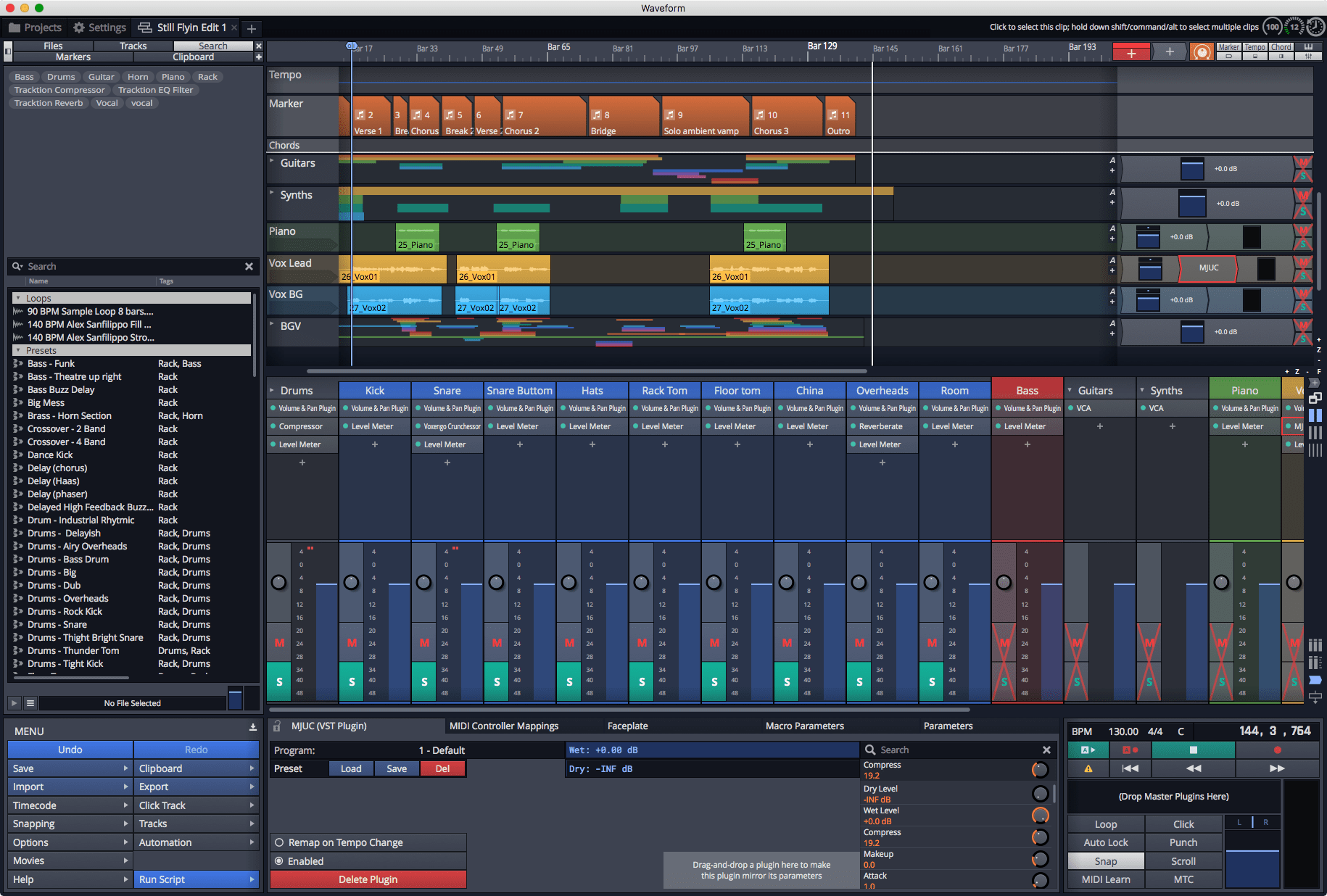
You may have heard of Tracktion before, since it’s been around for the last 17 years or so.
I personally was a huge fan of Tracktion, around version 1 and 2, for doing my own personal music work. Tracktion was then purchased by Mackie around version 3. In my view, Tracktion was totally ruined during this period. It became buggy, feature additions were limited and communication with the community was reduced to basically nothing. I don’t know what transpired behind the scenes, but it was unfortunate.
With Tracktion V4, ownership was gained by the original author along with some others great folks. Development ramped up again. Many new features were added. Roli acquired JUCE, which is the library that makes up the core of Tracktion/Waveform. There’s a strong core behind Tracktion in 2018.
Here we are at version 9 now. Tracktion is no longer the name of the software. Tracktion is the company that makes the software which is now named Waveform. I’ve avoided reviewing Tracktion or Waveform for the last few years because I feared that I would need to do a ‘side review’. A side review is where I only use the software aside my main DAW, much like how I did the Bitwig review. I rather try to use the DAW for at least 30 days as my main software, but I can only do that if the software offers a bare minimum of capabilities that I require.
I think that Tracktion Waveform 9 has managed to cross the line of ‘daily driver’ for me.
For the next 30 days or more I will be using Tracktion Waveform 9 as my main DAW. I’m unsure how I’m going to format this review yet, since I want to try something new, but you will definitely see the full effects/instruments reviews and the in-depth content that I always try to provide.
Waveform is a rather unique product and I think that this will be an interesting adventure. It will be even more interesting since I’m taking delivery of various products to upgrade my computer, a new interface, more preamps, more microphones, more outboard, new monitor control, more monitors and some fun audio software in the next few weeks too!
I did not pay for this copy of Waveform 9. It was provided as ‘free’ not-for-resale review copy. If I am happy with the product I will be purchasing a license for my own personal use at the end of this review. The NFR nature of the license will not influence my judgments in any way whatsoever.
Hopefully the first post will be up in the next 3 days. I have a lot of work to do in the next 2 days!
Other parts in this series:
- Version 9.1.1, Part 1: Browser, Mixing, GUI, VCAs
- Version 9.1.1, Part 2: Modulation, Plugin browsing, Annoyances, GUI
- Version 9.1.1, Part 3: Macros, UI design, Ghost tracks, Buying
- Version 9.1.1, Part 4: Pattern Generator, Edit Clips, Folder editing, Chord Track
- Version 9.1.1, Part 5: Step Clips, Loops, Clip Linking, Loop Recording, Track Presets
- Version 9.1.1, Part 6: MIDI Editing
- Version 9.1.1, Part 7: Recording
- Version 9.1.1, Part 8: Clip Layer FX, Multisampler, Scripting, Project Management and more
- Version 9.1.1, Part 9: Instruments and Effect Review
- Version 9.1.1, Part 10: Conclusion
- Version 10.1.0

My wife does not have a wedding band. We’ve been together since 2000, and she’s never had one. So I’m going to see if I can make one.
I’ve never made a ring before and I did zero research on how to do this. I just put some thought power in to it and then whacked at some wood.
Here’s my process…
Read more →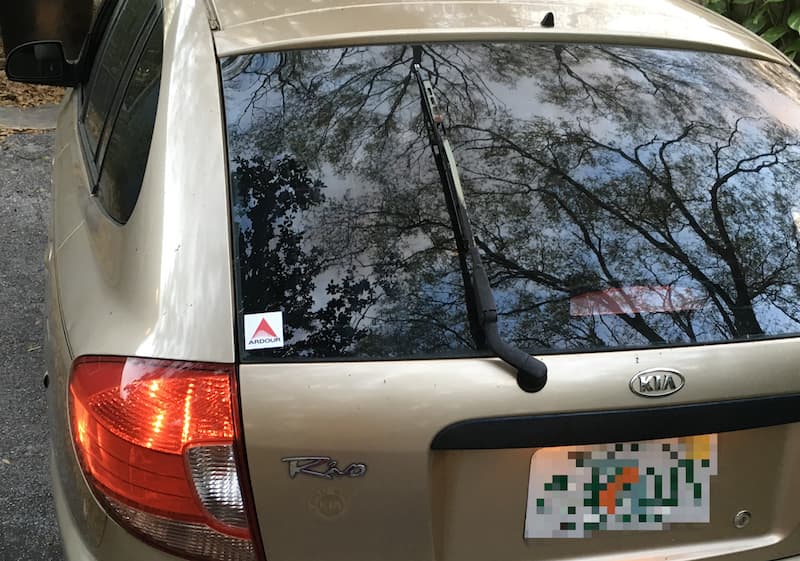
On Sunday the 18th of February, I held an interview with Paul Davis of the fantastic Ardour audio software. I covered Ardour in the past a few times.
While Paul is not the only awesome person that works on the software, due to its open source nature, he is the benevolent dictator that helps keep things flowing.
I wanted to find out about some of the big changes that may be coming in Ardour 6.0. What are the changes? Why where the necessary? How do they benefit the average user?
Let’s hit it!
Read more →
Often the phrase “Fixing the phase” or “Flipping the phase” (or more correctly, “Flipping the polarity”) is used in audio production. What does that mean? Why would you attempt to do that? When should you look for problems? How do you do it?
I’m going to try and cover these questions starting from the very basics. This includes scenarios without physical recordings, so you electronic musicians may get something out of it too!
Let’s get started.
Read more →
I have nowhere in my studio to properly put headphones. It’s rather annoying.
So today I decided to make some simple hooks to screw on to my desk. I used a small port of a pine 2x4. The amount of wood used is about $0.56usd of wood.
The total cost of tools used was about $4,000usd. You could easily do this with a chisel, a $10 saw, a drill and some drill bits. Maybe I’ll do something like that next time.
Now let’s get on to it!
Read more →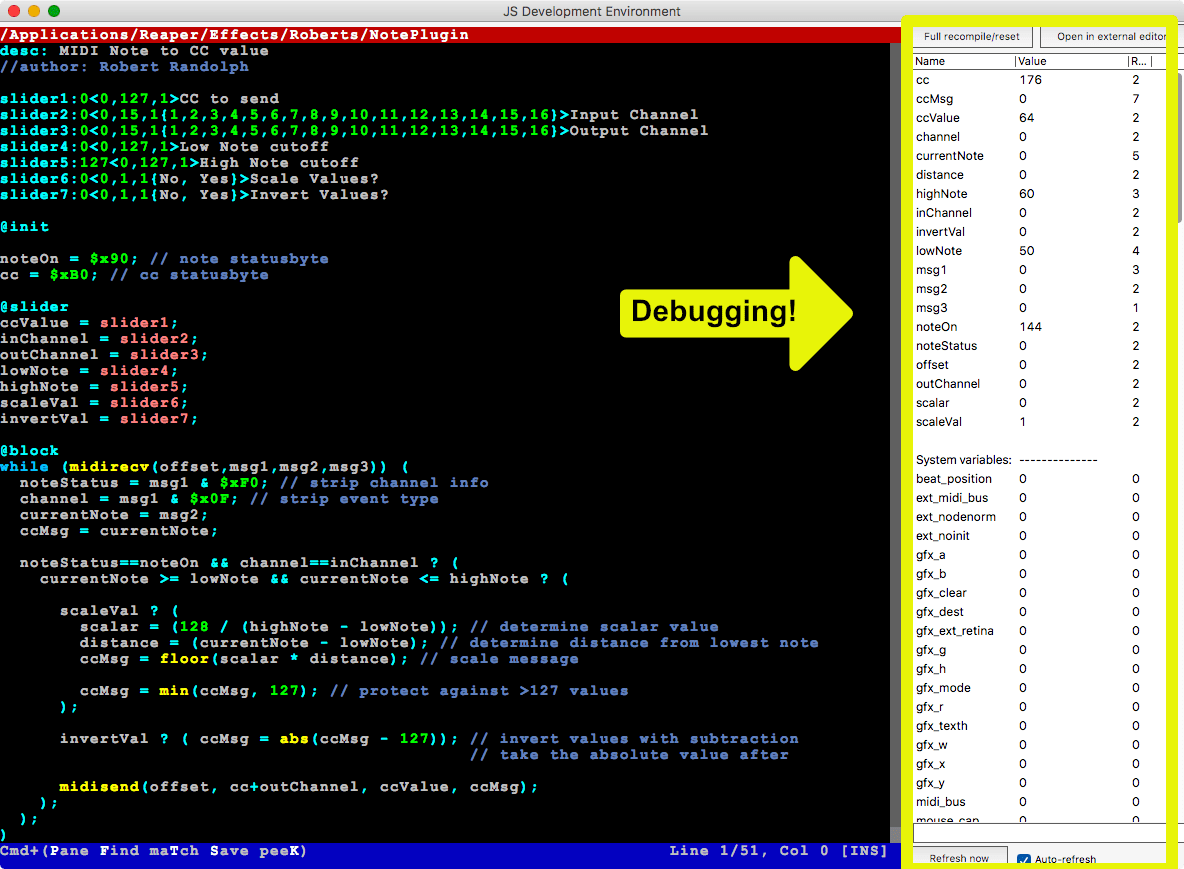
Today I’m going to show you how to write a MIDI plugin in Reaper using JSFX.
BUT WAIT! I’m going to assume that you are a total newb. I am going to walk you through every aspect of the process including how to find information.
The following topics will be covered:
- Basic JSFX MIDI programming
- How MIDI works, and how to find out more
- Simple Binary
- Counting in Binary
- Binary math
- Binary operators
- Hexadecimal
- Basic programming
- Basic problem solving
The only thing that you need for this is a computer with Reaper installed and a working internet connection. If you have any questions then please comment, I will happily answer to the best of my ability.
Big shoutout to Jon at The Reaper Blog. He brought up this question about a plugin that translated MIDI notes to CC on behalf of another user. That’s why I wrote this entire thing.
Read more →Tiny post… the DAW Feature Chart was updated to add Freezing features and an early addition of Scoring. The Scoring section will be slowly updated to include more fine-grained ratings, but for now it is a wholistic rating. I also added a new sub-category for ‘Automation Tools’.
The Chart was updated for Mixbus 4.3, Ableton Live 10 and Cubase 9.5.
I also fixed some minor bugs in the script.
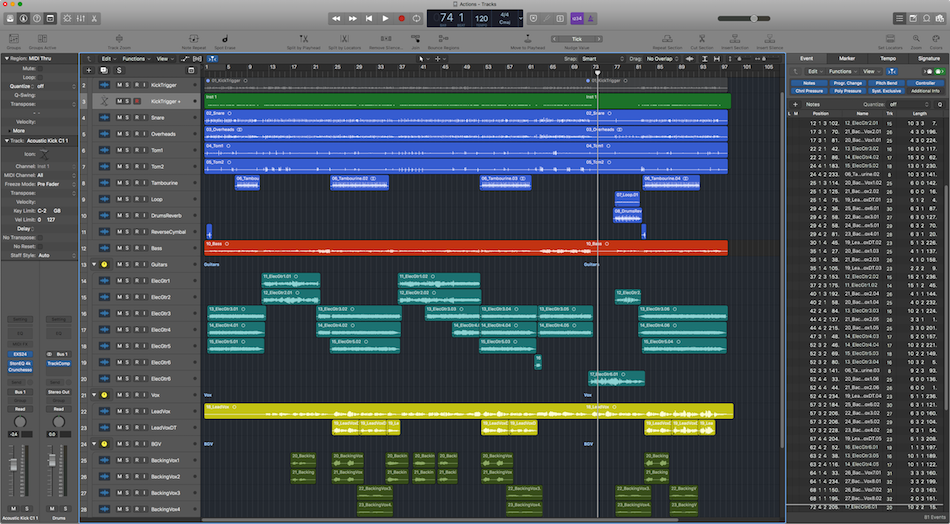
It’s time for the post that everyone seems to love: when I talk about the stuff I dislike about a DAW.
First things first: If you see anything that’s wrong or know of a great work around then please leave a comment. I will gladly update the post with the information if it’s good.
There won’t be too many images here, so be prepared for a bit of reading and not many eye-catching screenshots. I’ve split things in to categories as well so that you can see the portions that are of most interest to you.
These grips apply to Logic 10.4. I wrote a good portion of this before 10.4, but I tried to make sure I erased anything that was improved with the update. If I missed something then that’s mea culpa, so please correct me.
Oh right, and this is the last post in the series! My ultimate conclusion is at the end!
Let’s get on it.
Parts in this series:
- Cool things in Logic Pro X Part 1
- Cool things in Logic Pro X Part 2
- Cool things in Logic Pro X Part 3
- Cool things in Logic Pro X Part 4
- Cool things in Logic Pro X Part 5
- Logic Pro X Tips & Tricks and more cool things
- Logic Effects Review
- Cool things in Logic Pro X Part 10.4
- Logic Instruments and MIDI Effects Review